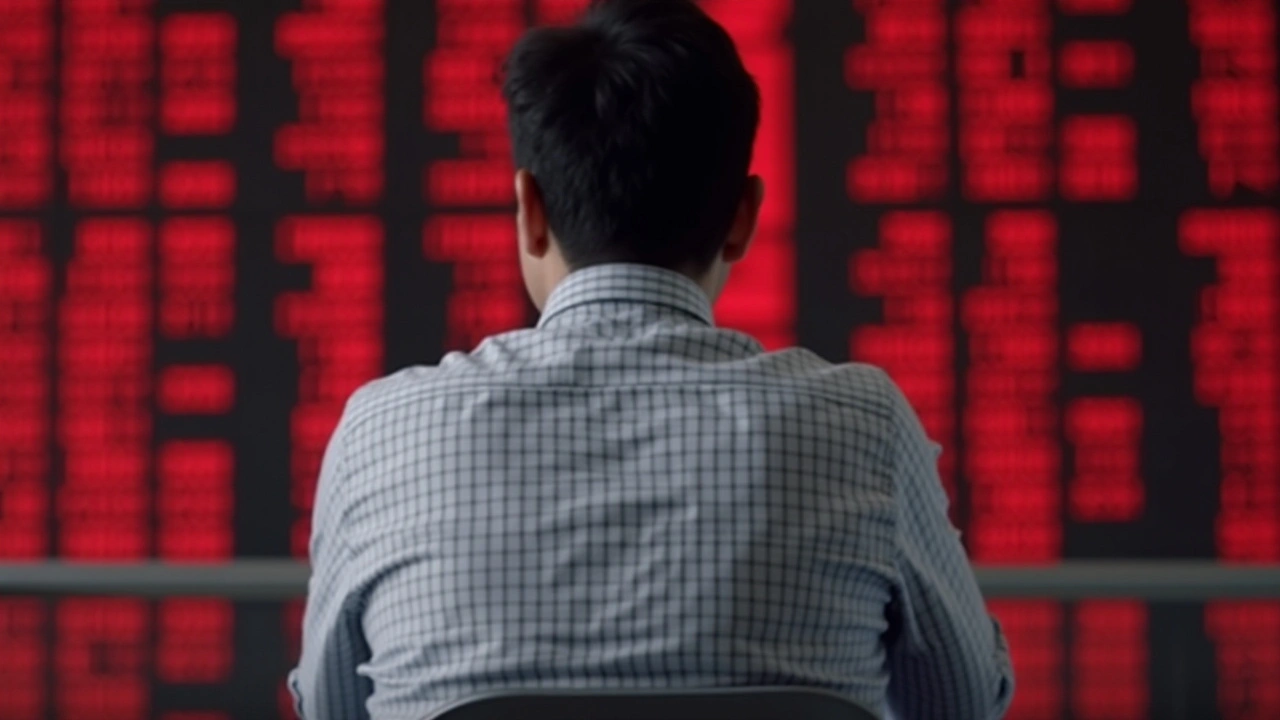Swaps Curve Inversion: A Crucial Indicator for China's Monetary Policy
The financial markets are buzzing with speculation after the inversion of the swaps curve, which indicates a newfound expectation among investors regarding China's monetary policy. Traditionally, an inverted swaps curve can signal a change in market sentiment and has become a focal point of analysis for many. As of January 13, 2025, this inversion points towards a shift where investors, who once anticipated a cut in interest rates by the People’s Bank of China (PBOC), now foresee stability or even a hike in rates.
China finds itself at a crossroads where improving economic data and strategic government interventions are reshaping investor expectations. A previously anticipated rate cut scenario has been replaced by a more steadfast stance on maintaining current interest rates or possibly increasing them. This is largely owed to China's robust fiscal policies designed to energize growth without leaning heavily into monetary policy. The PBOC has held the loan prime rate (LPR) steady since August 2023, indicating a resolve to keep monetary policy tools as they are while other resources are leveraged for stimulation.
Improving Economic Indicators
China's recent economic indicators have presented an optimistic outlook, rooting out the concerns that primarily fueled pessimistic expectations. Manufacturing and export numbers have shown a rebound, while domestic consumption patterns are rising steadily. These developments have built a foundation for economists and analysts to argue against the need for immediate monetary easing. By turning the lens away from monetary policy and towards fiscal strategies, China is working to ensure sustainable growth. Infrastructure projects, coupled with regulatory reforms, are designed to spur economic activity, subtly suggesting a lesser reliance on interest rate manipulation.
Additionally, China's move toward resourceful fiscal interventions underlines an intention to strike a balance rather than resort to frequent monetary maneuvers. The government's emphasis on infrastructure spending and tax incentives supports this outlook. As these contemporary strategies gain traction, market perceptions shift accordingly, leading to a cautious yet optimistic investor sentiment that challenges previous notions of an impending rate cut.
Market Analysis and Expert Opinions
Financial experts and market analysts view the swaps curve inversion as an important barometer for future monetary policy moves. Ken Cheung, a chief strategist at Mizuho Bank, notes the inversion has manifested a "significant shift" in market perspectives. This sentiment is echoed further by Marco Sun, a prominent analyst at MUFG Bank, who notes that with the economy showing tangible signs of recovery, the PBOC might refrain from reducing rates. Instead, the focus might pivot towards observing the unfolding economic momentum and adjusting policies as need be.
The Reuters survey further solidifies this emerging sentiment. A majority of respondents anticipate the LPR to remain unchanged through the first quarter of 2025. Some even go beyond, predicting rate increments as the economy recovers. Such trends lend credibility to the idea that fiscal initiatives may successfully ward off the necessity for rate drops. The inversion signifies not just a phase but a potential new paradigm concerning how markets interpret fiscal and monetary dynamics.
Potential Implications of Rate Policies
The policy decisions by the PBOC will have far-reaching implications not only within China but also globally. As one of the largest economies, China acts as a keystone in the global fiscal ecosystem. The notion of holding rates steady aligns with a period of consolidation and careful calibration aimed at leveraging China's growth potential without relying on aggressive rate adjustments. If China's fiscal policies achieve their intended outcomes, this could set a precedent influencing global central banks to adopt a similar balanced approach.
By artfully managing monetary expectations through other fiscal mechanisms, Beijing commands a vast toolkit to foster economic health while potentially altering its macroeconomic narrative. Emphasis on methods other than rate cuts for stimulating growth paints a picture of resilience, potentially calming global markets wary of instability.
Conclusion: Navigating China's Economic Prospects
The inversion of the swaps curve signals a noteworthy and analytical turn in how markets construct their forecasts about China's monetary policy. As investors recalibrate in light of China's strengthening indicators, there is a pervasive sense of vigilance surrounding the PBOC's next moves. Aided by strong government strategies and improved economic data, China's ability to sustain growth may well redefine its monetary policy blueprint.
What remains clear is that as China's economic landscape evolves, so too must the lenses through which global markets interpret its financial direction. The strategic pivot towards fiscal stimuli represents a proactive shift in using China's expansive economic toolkit, suggesting a broader strategy that extends beyond immediate interest rate changes.


Hemlata Arora
January 16, 2025 AT 09:47manohar jha
January 16, 2025 AT 19:48Nitya Tyagi
January 18, 2025 AT 08:35Sanjay Verma
January 19, 2025 AT 17:24surabhi chaurasia
January 21, 2025 AT 15:29Amresh Singh knowledge
January 21, 2025 AT 22:26Rahul Madhukumar
January 22, 2025 AT 18:28Khushi Thakur
January 24, 2025 AT 17:39Varad Tambolkar
January 25, 2025 AT 22:53Vijay Paul
January 26, 2025 AT 22:46RUPESH BUKE
January 27, 2025 AT 17:41